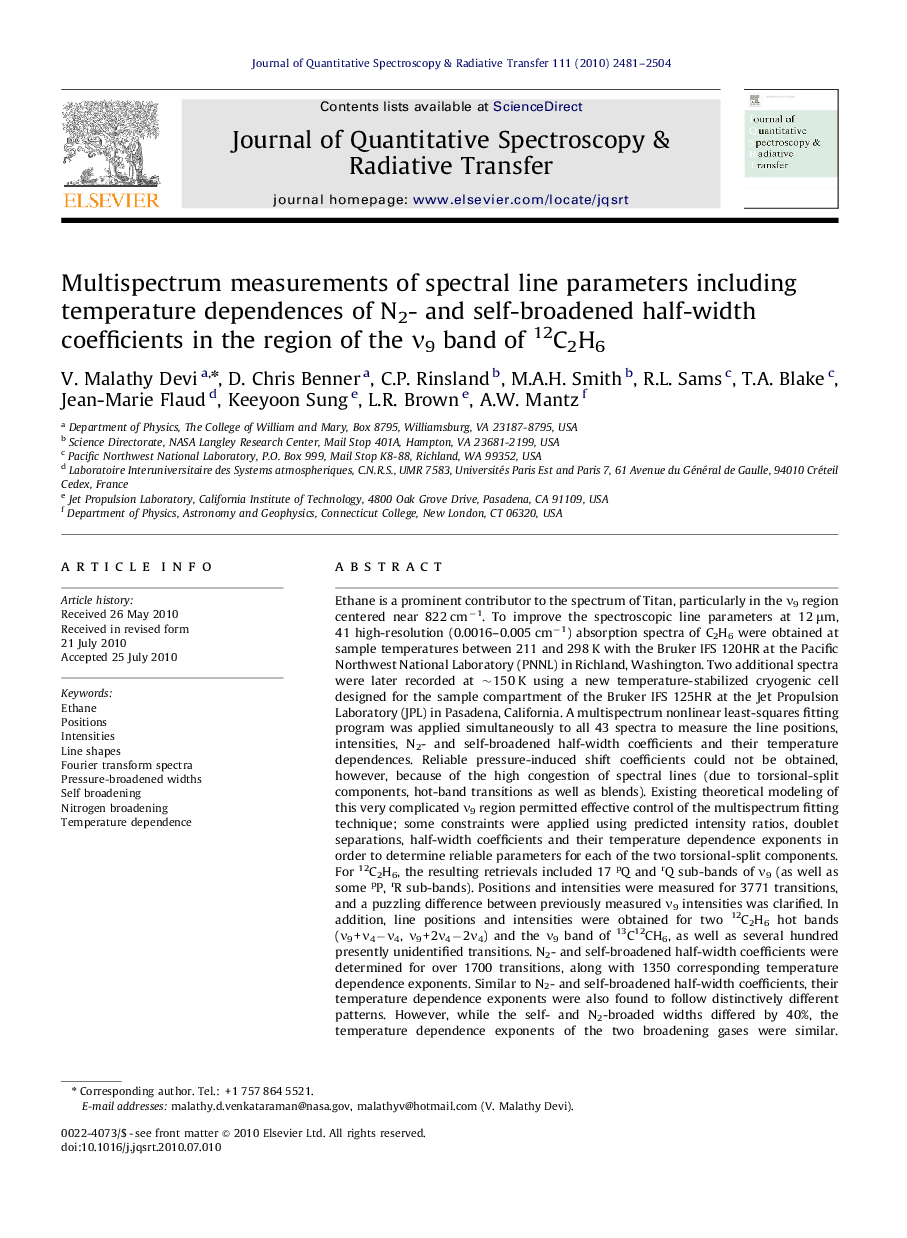| Article ID | Journal | Published Year | Pages | File Type |
|---|---|---|---|---|
| 5429704 | Journal of Quantitative Spectroscopy and Radiative Transfer | 2010 | 24 Pages |
Ethane is a prominent contributor to the spectrum of Titan, particularly in the ν9 region centered near 822 cmâ1. To improve the spectroscopic line parameters at 12 μm, 41 high-resolution (0.0016-0.005 cmâ1) absorption spectra of C2H6 were obtained at sample temperatures between 211 and 298 K with the Bruker IFS 120HR at the Pacific Northwest National Laboratory (PNNL) in Richland, Washington. Two additional spectra were later recorded at â¼150 K using a new temperature-stabilized cryogenic cell designed for the sample compartment of the Bruker IFS 125HR at the Jet Propulsion Laboratory (JPL) in Pasadena, California. A multispectrum nonlinear least-squares fitting program was applied simultaneously to all 43 spectra to measure the line positions, intensities, N2- and self-broadened half-width coefficients and their temperature dependences. Reliable pressure-induced shift coefficients could not be obtained, however, because of the high congestion of spectral lines (due to torsional-split components, hot-band transitions as well as blends). Existing theoretical modeling of this very complicated ν9 region permitted effective control of the multispectrum fitting technique; some constraints were applied using predicted intensity ratios, doublet separations, half-width coefficients and their temperature dependence exponents in order to determine reliable parameters for each of the two torsional-split components. For 12C2H6, the resulting retrievals included 17 pQ and rQ sub-bands of ν9 (as well as some pP, rR sub-bands). Positions and intensities were measured for 3771 transitions, and a puzzling difference between previously measured ν9 intensities was clarified. In addition, line positions and intensities were obtained for two 12C2H6 hot bands (ν9+ν4âν4, ν9+2ν4â2ν4) and the ν9 band of 13C12CH6, as well as several hundred presently unidentified transitions. N2- and self-broadened half-width coefficients were determined for over 1700 transitions, along with 1350 corresponding temperature dependence exponents. Similar to N2- and self-broadened half-width coefficients, their temperature dependence exponents were also found to follow distinctively different patterns. However, while the self- and N2-broaded widths differed by 40%, the temperature dependence exponents of the two broadening gases were similar. The variations of the observed half-width coefficients and their temperature dependences with respect to J, K quantum numbers were modeled with a set of linear equations for each K. The present broadening coefficients compared well with some of the prior measurements.
